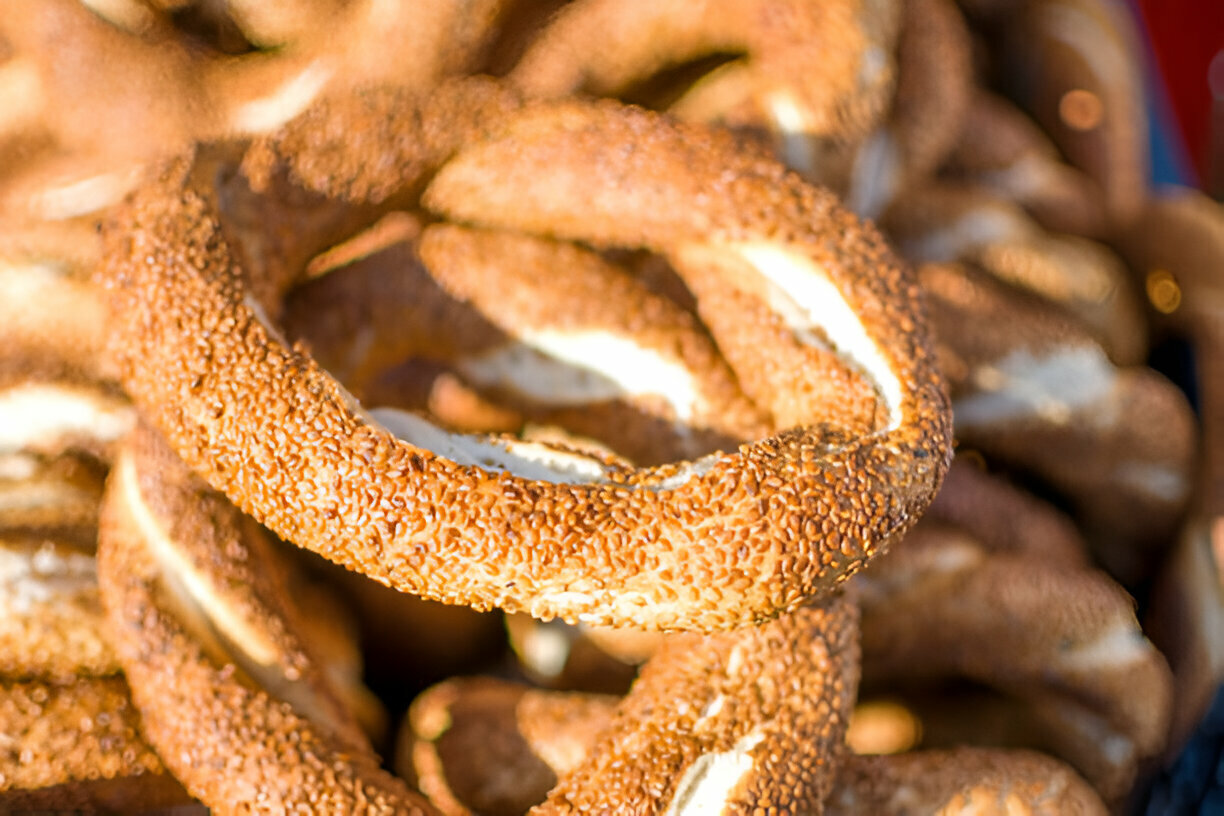
Turkish Sesame Bagel Recipe
Golden, crisp, and coated in toasted sesame seeds, Turkish sesame bagels—known as simit—offer a chewy bite and subtle sweetness that’s perfect for breakfast or snacking anytime of day.
Pin
Print
Save
Servings: 10 bagels
Calories: 300kcal
Ingredients
- 500 g flour
- 900 ml lukewarm water divided
- 7 g active dry yeast
- 1 tbsp sugar
- 1 tsp salt
- 30 ml olive oil
- 120 g honey
- 200 g sesame seeds
Instructions
- Begin by combining 300 ml of the lukewarm water with the active dry yeast and sugar in the bowl of a stand mixer. With the mixer on low speed, gradually add the flour, salt, and olive oil. Continue mixing for about 8 minutes until a smooth, elastic dough forms. Alternatively, knead by hand for 10 minutes until the dough reaches a supple consistency. Cover the bowl with a clean towel or plastic wrap and let the dough rest at room temperature for 30 minutes.
- While the dough rests, prepare the water bath by stirring the remaining 600 ml of lukewarm water with the honey in a shallow dish until fully dissolved. In a separate wide dish, spread the sesame seeds evenly for coating the rings.
- Once the dough has rested, punch it down gently to release any air. Divide the dough into 10 equal portions—using a kitchen scale ensures precision. Roll each piece into a tight ball, cover them loosely, and let them rest for another 10 minutes.
- Preheat your oven to 250°C (480°F). Working with two dough balls at a time, roll each ball into a 30 cm rope. Twist the two ropes together to form a braided strand, then bring the ends together and pinch to seal, creating a circular ring. Gently roll the formed ring under your palms to slightly widen and smooth it into a 15–20 cm diameter.
- Line two baking sheets with parchment paper. Dip each shaped ring into the honey water bath, allowing it to soak briefly. Lift and let the excess drip off, then place the ring into the sesame seeds and coat thoroughly on all sides. Transfer the coated ring to the lined baking sheet. Repeat this process for all remaining dough pieces. Once all are formed and arranged, cover them lightly and let them proof for 45 minutes at room temperature.
- Place the trays in the oven and immediately lower the temperature to 230°C (440°F). Bake the simit for 20–25 minutes, rotating the baking sheets halfway through to ensure even browning. The rings should be a deep golden brown with a crisp crust.
- Remove from the oven and allow to cool slightly before serving. These sesame-encrusted Turkish bagels are best enjoyed warm with a spread of cream cheese, a pat of butter, or simply on their own.
Nutrition
Calories: 300kcal
Did you make this recipe?Want more delicious recipes like this? Follow us on Pinterest for daily inspiration! Click here to Follow me on Pinterest @feaztcom